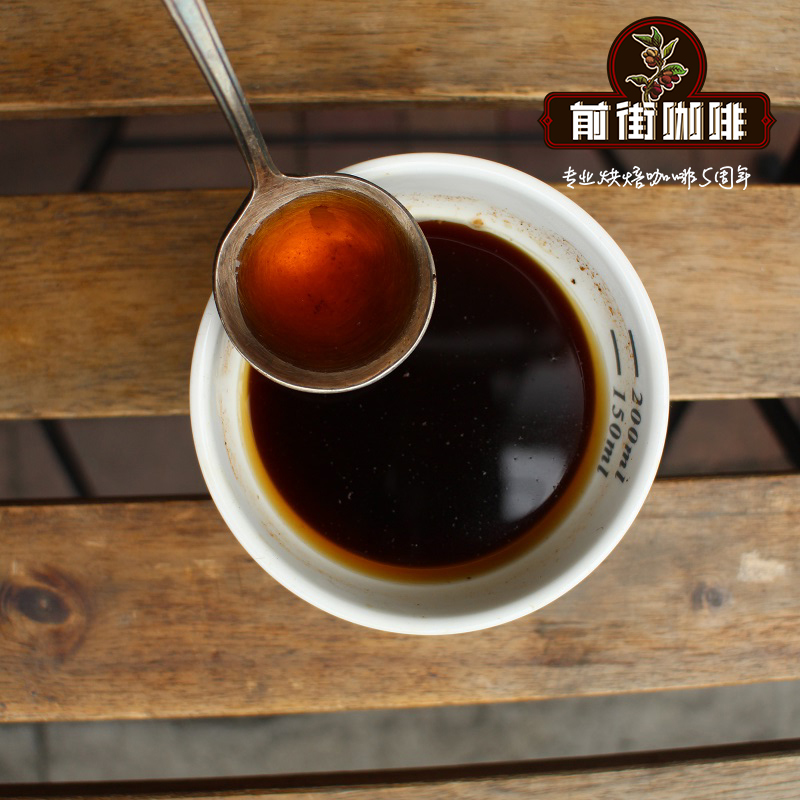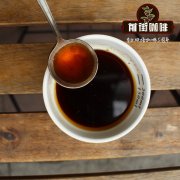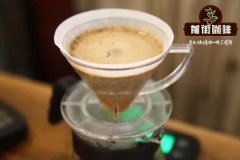How about Indonesian coffee beans? how to drink Indonesian coffee? What kind of coffee is good in Indonesia?

Professional coffee knowledge exchange more coffee bean information please follow the coffee workshop (Wechat official account cafe_style)
There are more than 50 coffee-growing countries in the world, and you will find that most of them are grown in the coffee belt area. This area, as its name suggests, surrounds the earth and covers parts of the Americas, Africa and Asia. The coffee belt mainly falls on the equator and then extends north and south to Mexico and Myanmar and to Zimbabwe and Brazil at the southernmost end.
Coffee is widely grown in different countries, different growing environments and so on, which will affect the taste of coffee. Next, I would like to briefly introduce a few common coffee producing areas.
As a consumer, you may find that you like the fruity of Ethiopian coffee, the balanced sweetness of Guatemalan coffee, or the heavy spices of Indonesian coffee. People want to experience different and interesting coffee flavors, but the appreciation of the original flavor is also quite precious.
What's more, different countries face different challenges, such as low income, political instability, and coffee pests.
Asia
Asia has a large area of land and has many different kinds of beans in coffee-growing areas. The most famous include Indonesia, which is famous for its smoky caffeine, herbs and spices, and coffee beans such as Vietnam, which have a distinct fruit flavor and high alcohol thickness. Vietnam mainly produces robusta coffee beans, which are mainly bitter and slightly less fragrant.
Of course, there are many lesser-known producing areas that have great potential for growing good coffee. Coffee from Papua New Guinea, juicy sour as red bayberry, obvious sweetness and unique spice flavor. The Philippines, Thailand, Fiji, Bali and so on, these places are coffee producing areas and have a unique flavor.
Soil and climate factors
So why do coffee tastes so different in different producing areas? This extends to two key points about the environment, soil, and climate.
Soil is related to topography, climate, and environment. Like the Galapagos Islands is a good example. Across the equator, you can imagine that the year of production here is in a hot climate-but this is not suitable for the growth of high-quality coffee. Coupled with the low-altitude topography, people will lower their expectations here. Because under the general concept, boutique coffee grows at high altitude and low temperature, which has a long growth cycle, enough time to develop sweetness, and other more complex flavors.
However, the island has impressed consumers with high-quality coffee, thanks to the unique cold sea breeze on the island and the Humboldt cold spell from northern Chile.
Indonesia is the largest archipelago country in the world. Arabica tree species coffee was introduced and planted during the Dutch rule in the 18th century. The main producing areas are in Sumatra, Java and Sulawesi. Mantenin's deep, low-acidity and rich taste makes people call it the 'most important coffee in the world'. It is also the fourth largest producer in the world with an annual output of 7 million bags. Coffee is harvested twice a year from May to June and from September to October, with the highest production in Sumatra and Aceh. The scale of the coffee farm is not about 1-3 hectares. Mantenin coffee treatment in Indonesia generally adopts semi-washing method. Coffee farmers harvest ripe coffee beans, remove the external peel and pulp but retain the thin film tissue on the coffee beans, and remove the poor beans that do not bear fruit and float on the water surface through the process of immersion and fermentation, while the strong and sunken beans can be sunlit or directly to the ground with the surface film. Finally, a dryer is used to make the moisture content reach a unified standard. The most unique thing is to use parchment to cover coffee beans with a thin film to maintain a moisture content of 18%. Before shipment, the coffee bean surface film is polished and cleaned. The world calls this section of the special treatment method called Indonesian-style semi-washing method, large coffee processing plants can accurately control each treatment process, flavor and taste has a certain level. On the other hand, small coffee farmers treat raw beans in their own yard, and the flavor will vary according to the handling methods and skills of different coffee farmers.
The harvest season is from May to September, and the main harvest is from June to August. After the coffee is harvested, the coffee cherries that are not ripe and affected by diseases and insect pests are screened and removed by hand.
After peeling, the harvested berries will first undergo dry fermentation for 18 hours with 15 Murray, then add water and continue to ferment for 10 Murray for 12 hours, and then rinse with clean water after fermentation is complete.
At present, most coffees are dried on the scaffolding in the greenhouse for two days, and then moved to the terrace to dry. The drying time is about 14m / m2 for 20 days, depending on whether it rains during the drying period.
Qianjie recommends Indonesian coffee brewing:
KONO/88 ℃ / 1 14 / time one minute and fifty seconds
Important Notice :
前街咖啡 FrontStreet Coffee has moved to new addredd:
FrontStreet Coffee Address: 315,Donghua East Road,GuangZhou
Tel:020 38364473
- Prev

What's the flavor of Indonesian coffee? How about Indonesian coffee beans? How do you drink Indonesian coffee?
For more information about coffee beans, please follow the coffee workshop (Wechat official account cafe_style) Java is an Indonesian island located in southeast Malaysia and Sumatra, south of Borneo (Kalimantan (Kalimantan)) and west of Bali. Although Java is only the fourth largest island in Indonesia, it has more than half of the country's population and is politically
- Next

Story of Burundian Coffee in African Coffee producing area proportion and Flavor of African Heart Coffee beans
Professional coffee knowledge exchange more coffee bean information please follow the coffee workshop (Wechat official account cafe_style) for some coffee lovers or coffee rookies, do not like to read the long and complex description, but also want to know about coffee, so today to briefly introduce the history of Burundi coffee Burundi coffee (Burundian coffee) coffee was in 1930
Related
- Detailed explanation of Jadeite planting Land in Panamanian Jadeite Manor introduction to the grading system of Jadeite competitive bidding, Red bid, Green bid and Rose Summer
- Story of Coffee planting in Brenka region of Costa Rica Stonehenge Manor anaerobic heavy honey treatment of flavor mouth
- What's on the barrel of Blue Mountain Coffee beans?
- Can American coffee also pull flowers? How to use hot American style to pull out a good-looking pattern?
- Can you make a cold extract with coffee beans? What is the right proportion for cold-extracted coffee formula?
- Indonesian PWN Gold Mandrine Coffee Origin Features Flavor How to Chong? Mandolin coffee is American.
- A brief introduction to the flavor characteristics of Brazilian yellow bourbon coffee beans
- What is the effect of different water quality on the flavor of cold-extracted coffee? What kind of water is best for brewing coffee?
- Why do you think of Rose Summer whenever you mention Panamanian coffee?
- Introduction to the characteristics of authentic blue mountain coffee bean producing areas? What is the CIB Coffee Authority in Jamaica?

